When you were running on the playground, you suddenly saw the person running nearby fall down. Your first reaction was what?
If it is found that he is unconscious and not breathing, do you know how to save him before the ambulance arrives?
On the afternoon of October 17, 2017, this happened at Shanghai University of Technology. Fortunately, however, the fallen person was saved successfully, and the first aid was successful with a small instrument.
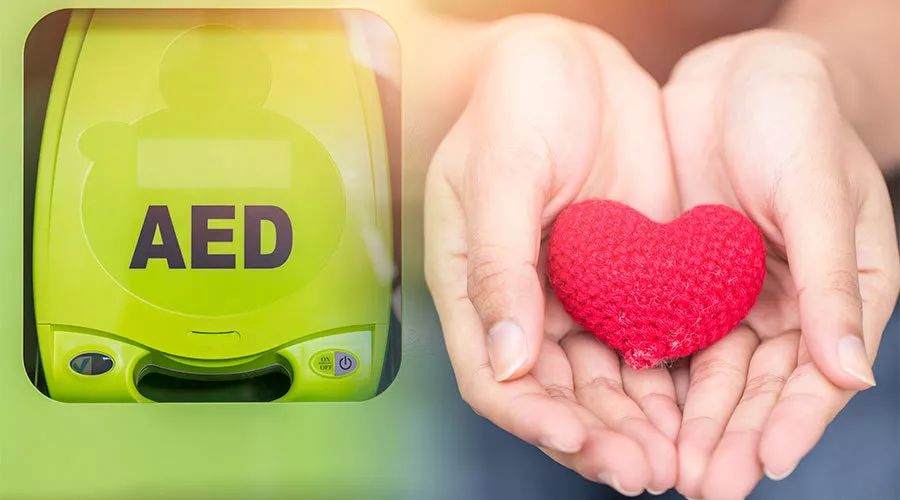
At that time, Li Xiang (pseudonym), a senior male student, was taking part in a physical fitness test for a 1000-meter long-distance race when he suddenly fell to the ground 50 meters away from the finish line.
When the school doctor arrived, he found that he had lost consciousness, had no spontaneous breathing, and the carotid artery beat disappeared. He immediately decided to carry out cardiopulmonary resuscitation on him and let others quickly fetch the AED from the school.
After analyzing a series of procedures such as heart rhythm, electric shock and cardiopulmonary resuscitation, after 4 minutes, Li Xiang was prompted on the AED display screen to successfully recover sinus rhythm.
This is the first successful case of AED first aid in colleges and universities across the country.
Is the life-saving artifact AED what?
AED, or automatic external defibrillator, is a portable medical device. For patients with cardiac arrest, it can recognize ventricular fibrillation and automatically charge, and then recommend rescuers to perform electric shock defibrillation according to instructions.
< < 2016 China Cardiopulmonary Resuscitation Expert Consensus > > pointed out:
In our country, the number of patients with cardiovascular diseases has reached nearly 300 million, and cardiovascular diseases have become the leading cause of death among Chinese residents.
For families, members of every age group have the risk and possibility of sudden death. Every member of the family should learn the relevant scientific knowledge of first aid, especially cardiac arrest.
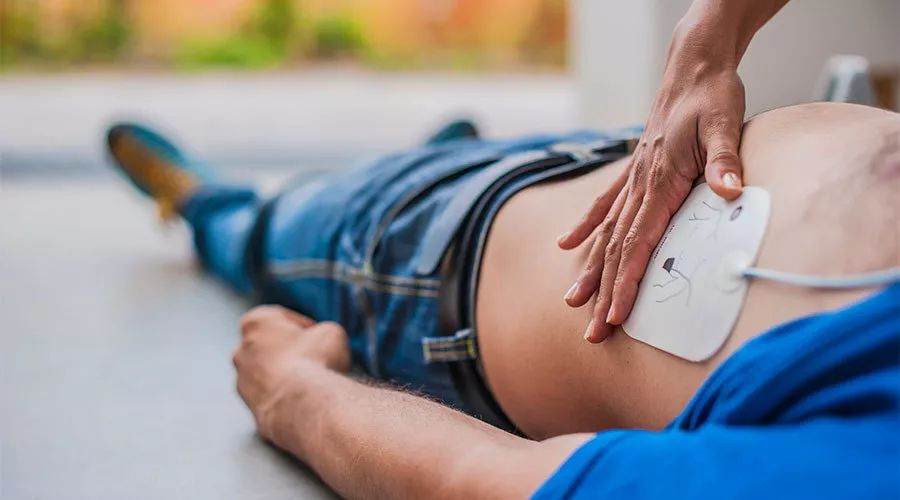
Ventricular fibrillation is the cause of most non-traumatic cardiac arrest in adults. Studies have proved that for patients with ventricular fibrillation, the success rate of rescue will be reduced by 7% ~ 10% for every delay of defibrillation for 1 minute.
Therefore, the use of AED for early electrical defibrillation is one of the keys to successful resuscitation in patients with cardiac arrest.
More importantly, the operation method of the AED is very simple. Perhaps it only takes 3 minutes to understand the AED today and can save other people’s lives at the next critical moment.
The operation is very simple, can learn in 3 minutes
AED is called “fool camera” in first aid equipment because there will be voice prompt operation method after opening.
< < 2010 American Heart Association Guidelines for Cardiopulmonary Resuscitation and Cardiovascular First Aid > > > pointed out:
AED can be operated correctly without advance training, and untrained bystanders can save lives by using AED.
To use AED, you only need to remember four simple steps:
- Press the start key to start the device. Apply the electrode sheet to the patient’s chest according to the prompt and insert the electrode plate plug into the AED host jack. If electric shock is recommended after AED analysis, press the electric shock button. Immediately after defibrillation, perform 5 cycles of cardiopulmonary resuscitation, and then the AED analyzes the heart rhythm again.
It should be noted that no one should contact the patient during the analysis of heart rhythm and electric shock.
At the same time, there is no need to worry that AED will injure normal people by mistake!
AED can automatically identify defibrillable heart rhythm. It will not recommend defibrillation, nor will it charge or discharge for people who faint and are not awake and are not suitable for defibrillation. It is absolutely safe.
How to find the nearest AED in public places?
At present, some domestic cities, such as Shenzhen, Shanghai, Hangzhou and other places, can inquire about nearby AED devices through WeChat.
The specific method is to open WeChat’s [Payment] function, find [City Service], click Enter and find [Emergency Service], and you can see the [AED Navigation] option, which can find the nearest AED to you.
Slide left to view usage
▼
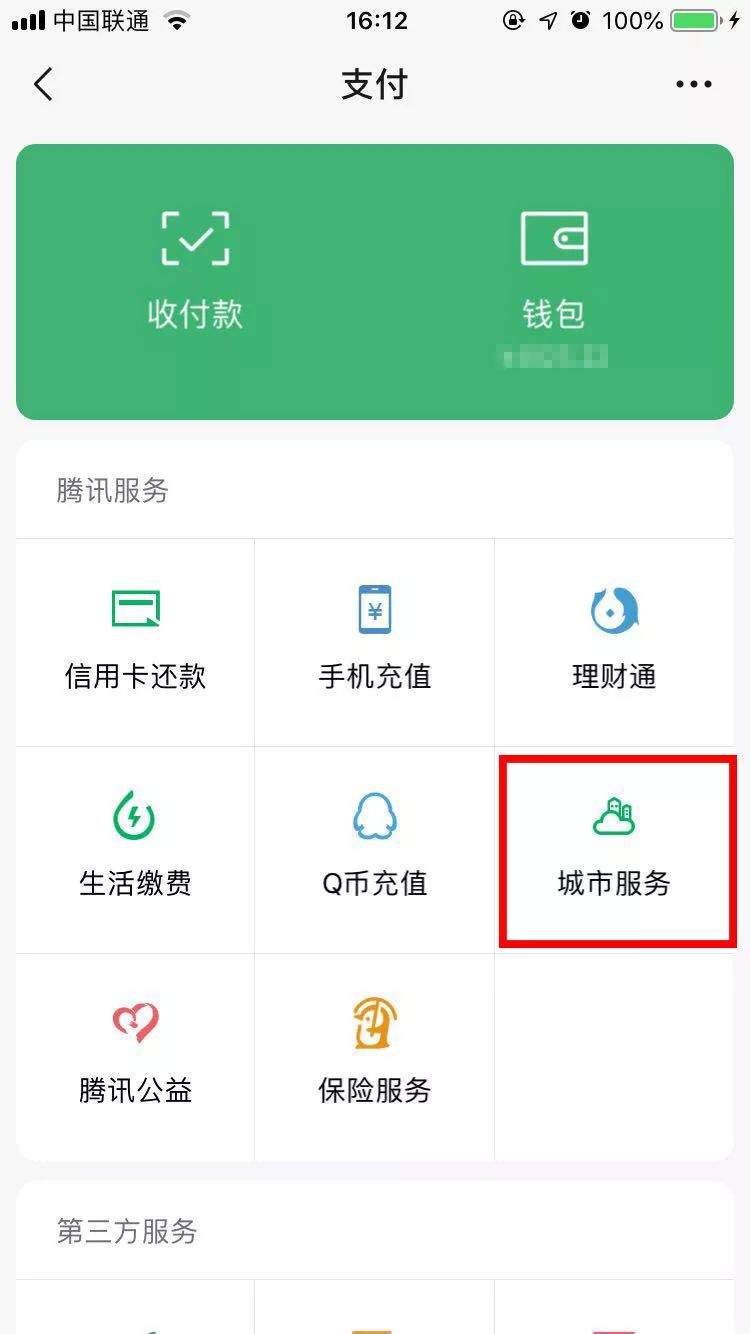
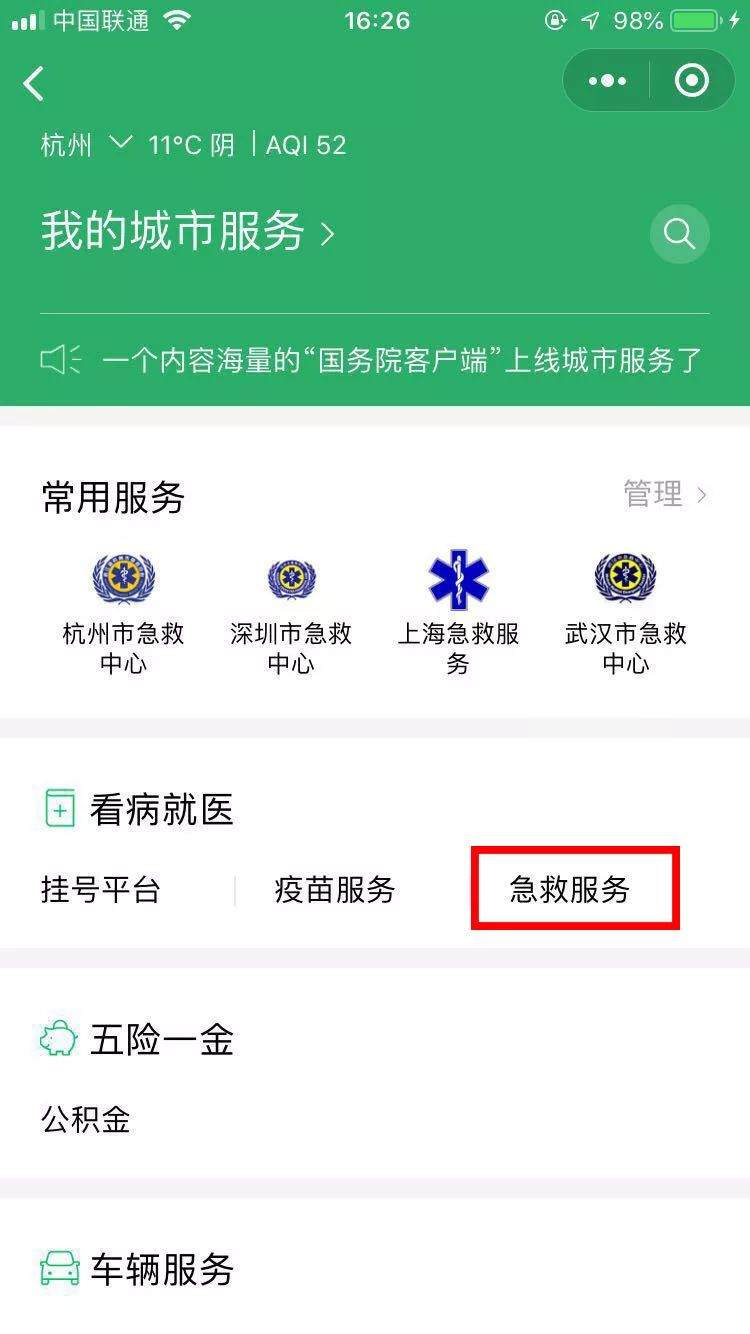
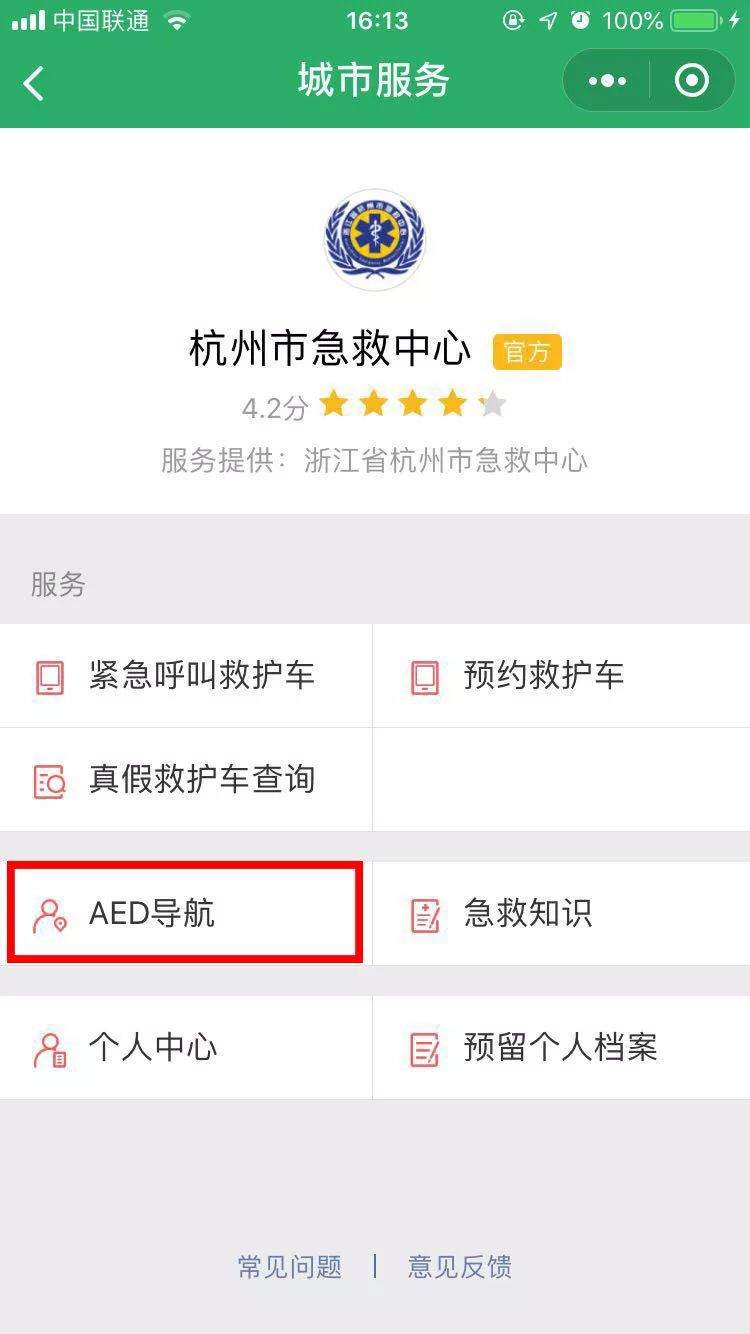
Source: Screenshot
If your city has not yet launched this service, you can also search on the map App of your mobile phone. Generally, all major map apps will provide AED search function.
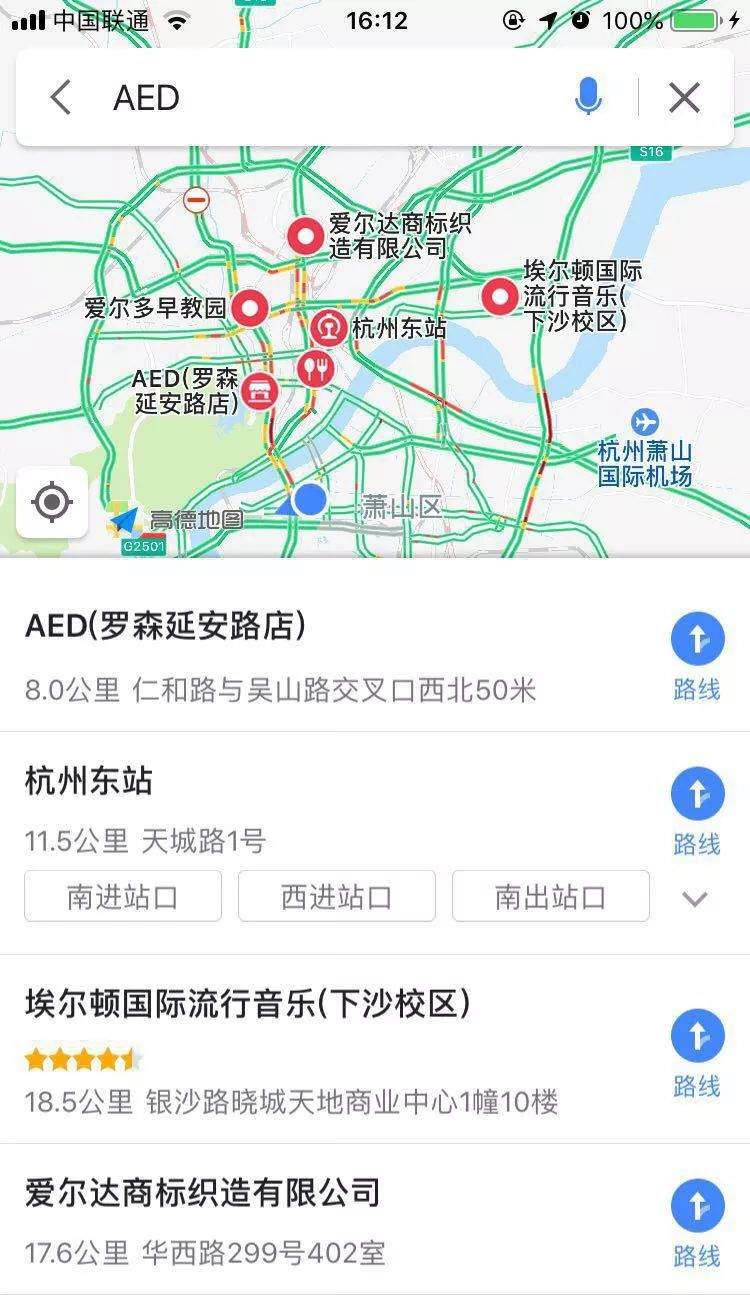
Source: Screenshot
If the mobile phone cannot find it, you can also directly find the nearby staff for inquiry.
First aid equipment, first aid ability, first aid awareness
One of the three is indispensable.
In our country, the number of sudden cardiac death is about 550,000 every year, which is equivalent to one person dying of sudden cardiac death every minute.
Only less than 1% of them can be successfully rescued.
However, in some countries with perfect AED configuration and good promotion results of first aid knowledge, the success rate of out-of-hospital cardiac arrest resuscitation can reach about 10%, and even reach 30% in some cities in the United States.
If our success rate of out-of-hospital resuscitation can be increased to 10%, nearly 50,000 more people can be rescued from death every year.
According to CCTV news reports, Japan has 394 AEDs per 100,000 people, compared with 317 in the United States.
However, in China, the figure is only 0.2 units. Even in Beijing, the number of AED units in the city is only around 200 or 300.
Distribution of AED in Beijing
▼
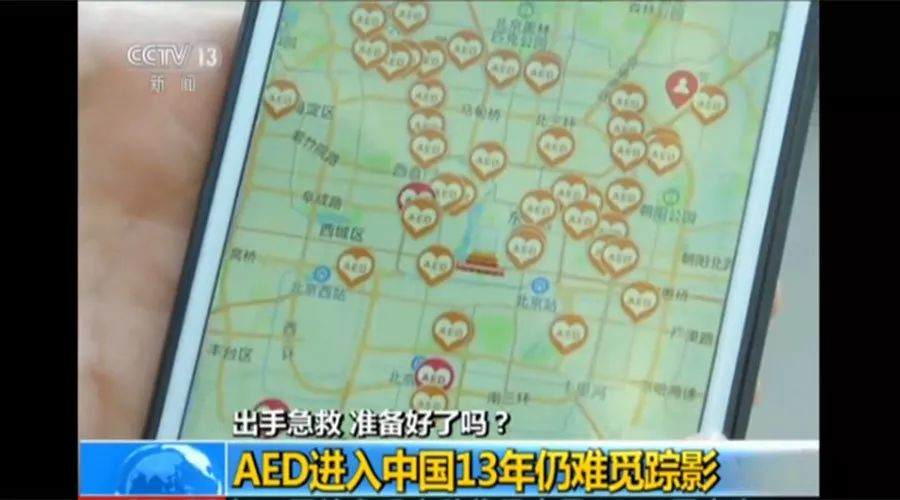
Source: CCTV News Screenshot
However, understanding AED, learning to use AED and making the configured AED play its greatest role are important steps that we ordinary people can take.
It only takes 3 minutes to learn to use AED, but in return it may be another person’s chance to survive.
And that person may be you, me, him, and our cherished relatives and friends.
Share this article with the people around you. Every time one more person knows AED, we have a little more chance of surviving an accident.

This article has been reviewed by emergency doctors, international field medical association instructors, american heart association emergency instructors, emergency nighthawk
–References–
[1] 2010 American Heart Association Guidelines for Cardiopulmonary Resuscitation and Cardiovascular First Aid.
[2] 2016 China Cardiopulmonary Resuscitation Expert Consensus.
[3] First aid, ready? AED has been in China for 13 years and its number is still scarce.
Http://tv.cctv.com/2019/01/20/VIDEH6CO88wdwjLrmuTdDEON190120.shtml
Source of cover photo: www.hizy.net Genuine Photo Library
Responsibility: CC
